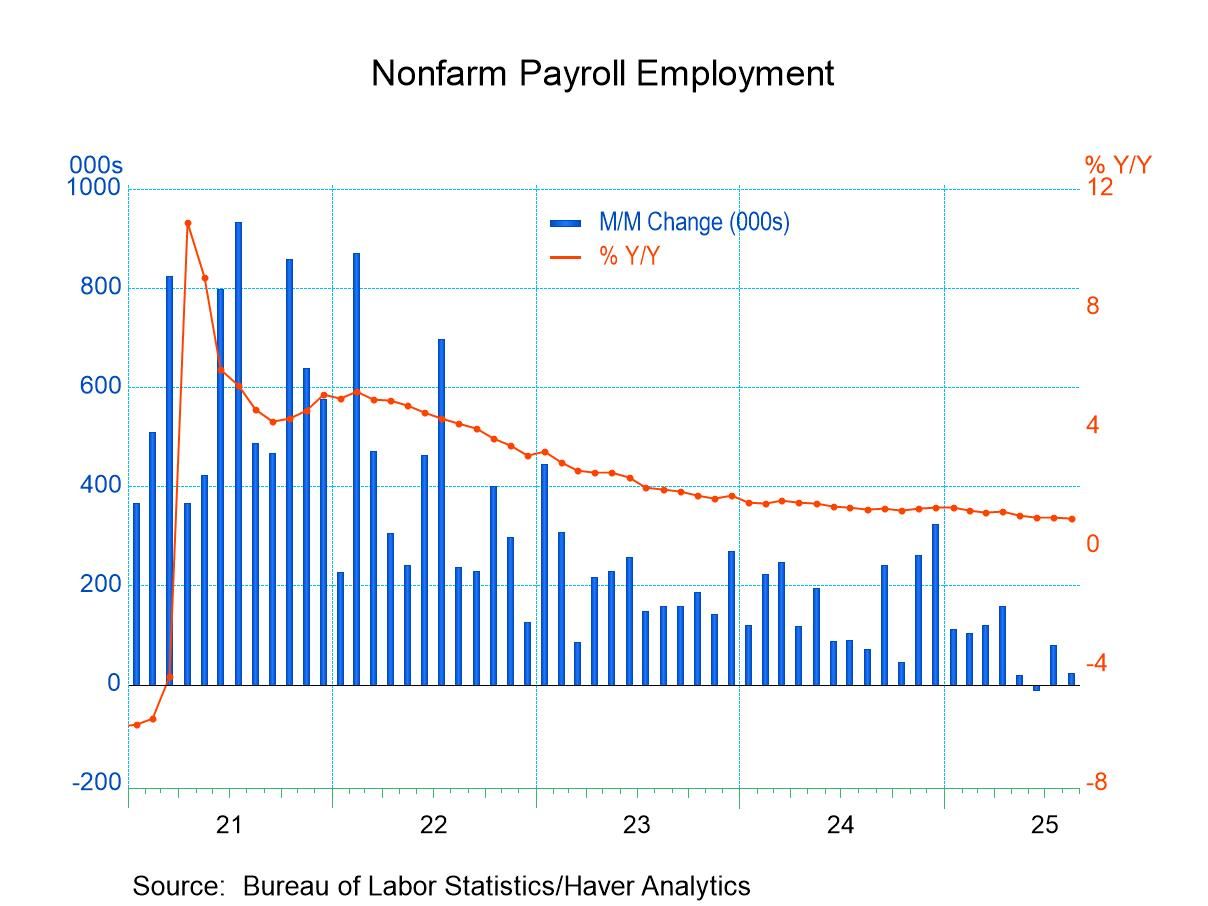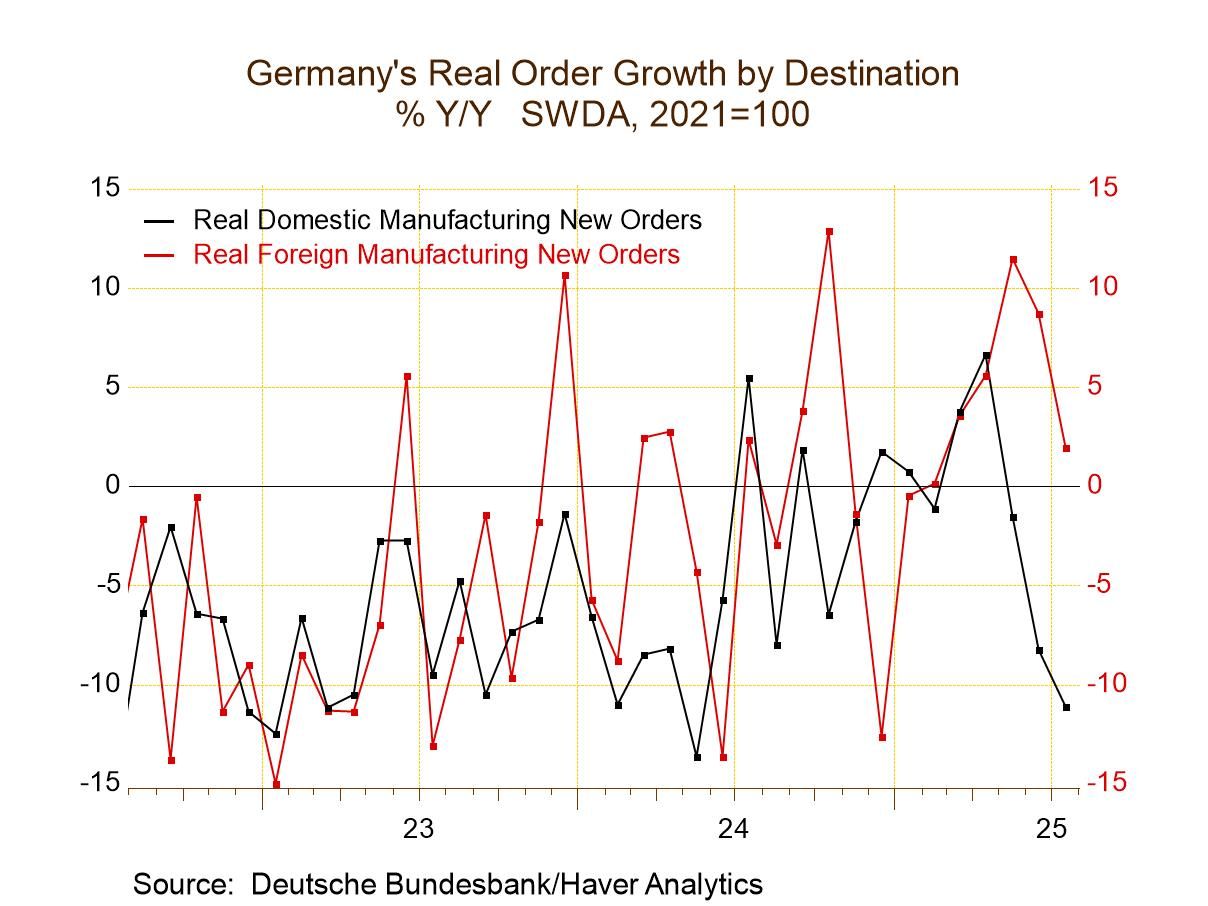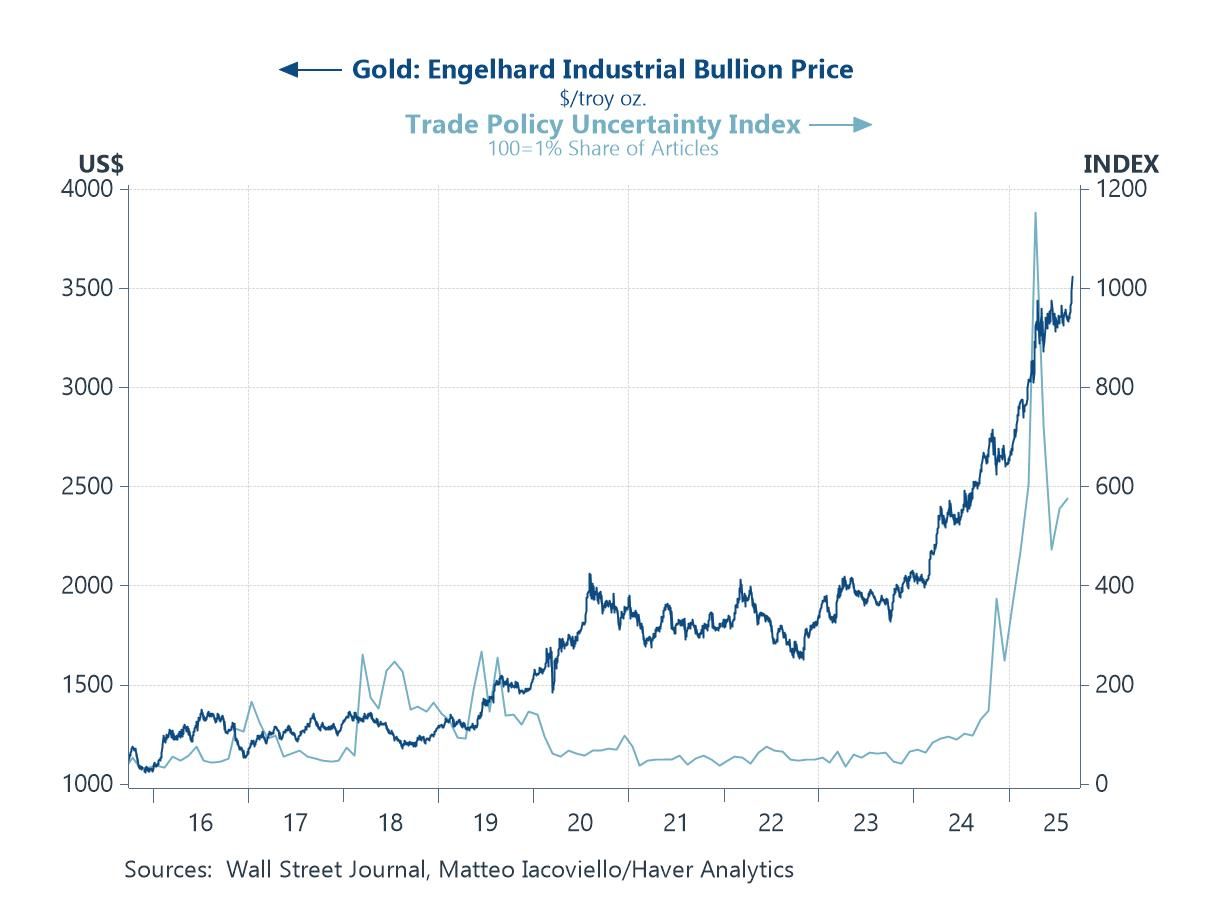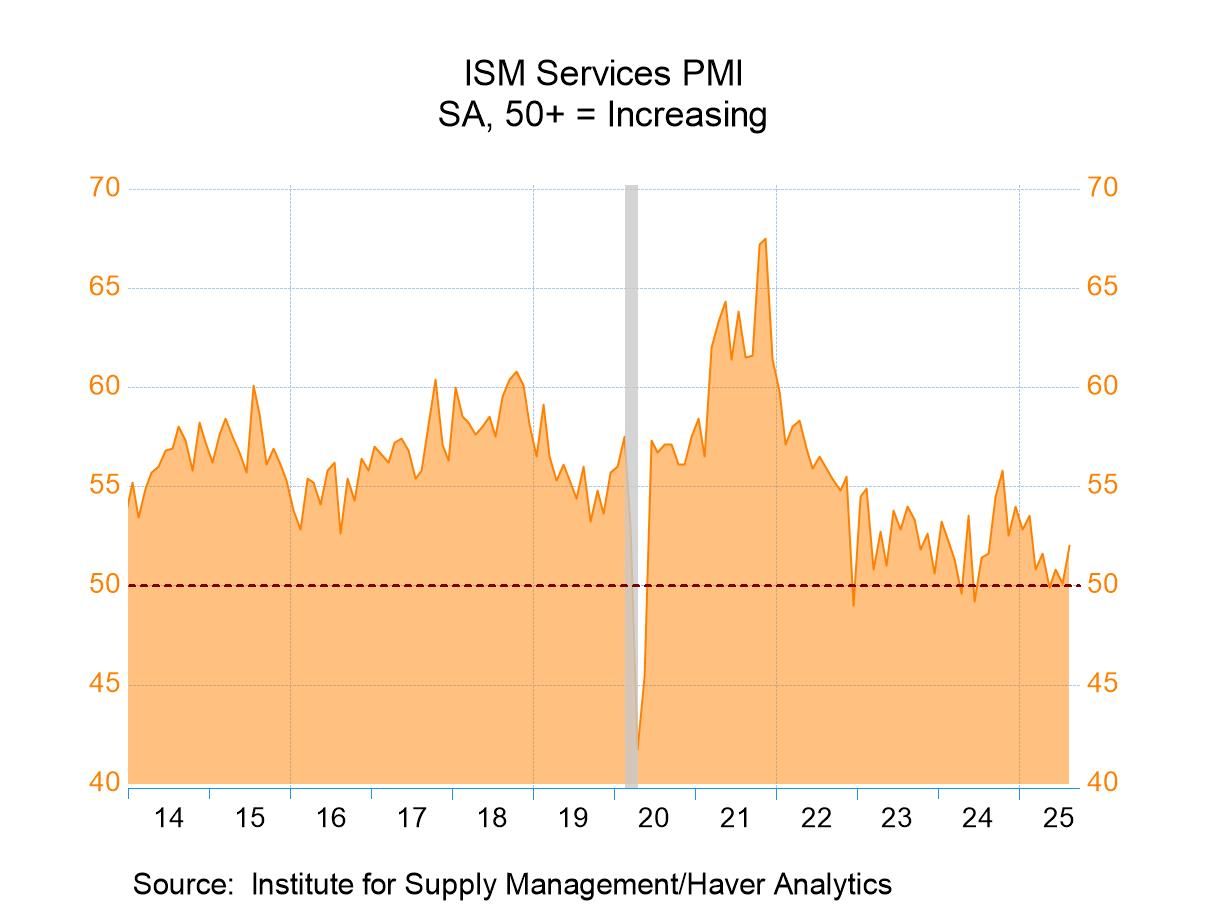 Global| Jul 20 2004
Global| Jul 20 2004Housing Starts Fell Sharply
by:Tom Moeller
|in:Economy in Brief
Summary
Housing starts fell 8.5% last month to the lowest level since May of last year. June starts totaled 1.802Mversus the Consensus expectation for 1.95M. It was the largest m/m drop in starts since February 2003. Single family starts [...]
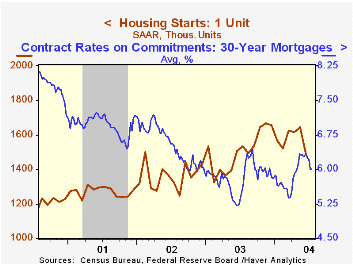
Housing starts fell 8.5% last month to the lowest level since May of last year. June starts totaled 1.802Mversus the Consensus expectation for 1.95M. It was the largest m/m drop in starts since February 2003.
Single family starts paced the decline with a 9.5% skid to the lowest level since last May.
Multi-family starts fell 3.7%, the third consecutive monthly decline.
The decline in housing starts last month was across the country's regions, but was most pronounced in the West where starts fell 16.5% from a record high.
Building permits fell 8.2% m/m from a record high.
| Housing Starts (000s, AR) | June | May | Y/Y | 2003 | 2002 | 2001 |
|---|---|---|---|---|---|---|
| Total | 1,802 | 1,970 | -2.6% | 1,848 | 1,711 | 1,601 |
| Single-family | 1,489 | 1,645 | -1.1% | 1,501 | 1,364 | 1,272 |
| Multi-family | 313 | 325 | -9.3% | 347 | 347 | 330 |
| Building Permits | 2,077 | 2,006 | 12.5% | 1,831 | 1,750 | 1,637 |
by Tom Moeller July 20, 2004
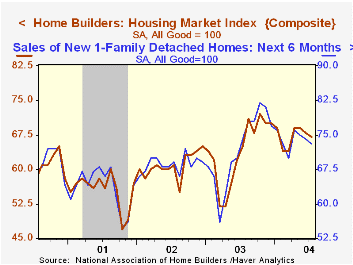
The Composite Housing Market Index reported by the National Association of Home Builders (NAHB) fell for the second consecutive month in July to 67. June's figure was revised slightly higher. The index remained 3.1% higher than last year.
During the last fifteen years there has been an 80% correlation between the y/y change in the NAHB index and the change in single family housing starts.
The index of expected single family home sales in six months fell moderately. The current sales index was stable.
Traffic of prospective buyers dropped to the lowest level since April (-2.0% y/y).
The NAHB index is a diffusion index based on a survey of builders. Readings above 50 signal that more builders view conditions as good than poor.
Visit the National Association of Home Builders using this link.
| Nat'l Association of Home Builders | July | June | July '03 | 2003 | 2002 | 2001 |
|---|---|---|---|---|---|---|
| Composite Housing Market Index | 67 | 68 | 65 | 64 | 61 | 56 |
by Tom Moeller July 20, 2004

Chain store sales ticked 0.2% higher last week following no change the prior period, according to the International Council of Shopping Centers (ICSC)-UBS.
So far in July sales are up 0.1% versus the June average which fell 0.8% from May.
During the last ten years there has been a 59% correlation between y/y change in chain store sales and the change in non-auto retail sales less gasoline.
The ICSC-UBS retail chain-store sales index is constructed using the same-store sales reported by 78 stores of seven retailers: Dayton Hudson, Federated, Kmart, May, J.C. Penney, Sears and Wal-Mart.
| ICSC-UBS (SA, 1977=100) | 07/17/04 | 07/10/04 | Y/Y | 2003 | 2002 | 2001 |
|---|---|---|---|---|---|---|
| Total Weekly Retail Chain Store Sales | 439.2 | 438.5 | 3.3% | 2.9% | 3.6% | 2.1% |
Tom Moeller
AuthorMore in Author Profile »Prior to joining Haver Analytics in 2000, Mr. Moeller worked as the Economist at Chancellor Capital Management from 1985 to 1999. There, he developed comprehensive economic forecasts and interpreted economic data for equity and fixed income portfolio managers. Also at Chancellor, Mr. Moeller worked as an equity analyst and was responsible for researching and rating companies in the economically sensitive automobile and housing industries for investment in Chancellor’s equity portfolio. Prior to joining Chancellor, Mr. Moeller was an Economist at Citibank from 1979 to 1984. He also analyzed pricing behavior in the metals industry for the Council on Wage and Price Stability in Washington, D.C. In 1999, Mr. Moeller received the award for most accurate forecast from the Forecasters' Club of New York. From 1990 to 1992 he was President of the New York Association for Business Economists. Mr. Moeller earned an M.B.A. in Finance from Fordham University, where he graduated in 1987. He holds a Bachelor of Arts in Economics from George Washington University.



